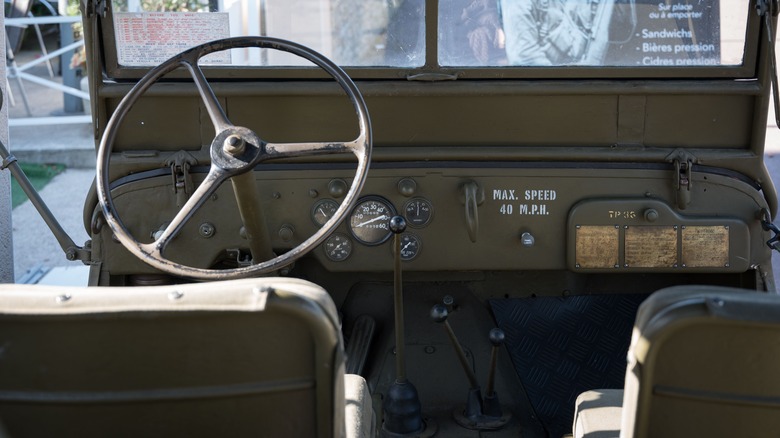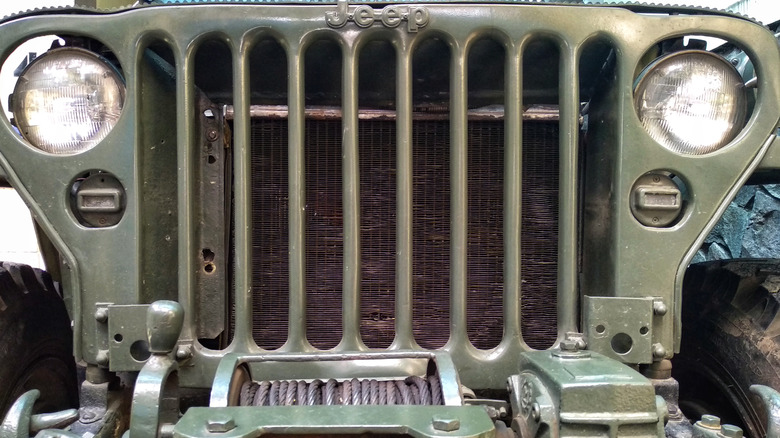The History Of The Original Jeep's Color
"Olive drab" has long been synonymous with military service. In the early days of American history, troops donned more formal attire in stunning blues, greys, gold buttons and blood stripes. But as technology advanced, so too did the uniforms American troops would wear — moving on to more utilitarian brown and olive tones during World Wars I and II, then onto full Army green, before iterating to the full camouflage we know today. It wasn't just the clothing, however, that took on more muted hues. As vehicles replaced horses as the primary mode of combat transportation, their colors needed to become analogous with their environment and the troops that they carried.
During World War II, the utility vehicle that would eventually become the Jeep was one such automobile that would eventually feature its own eponymous olive tone. The name of the particular verdant shade first used on the original Jeep was aptly titled "olive drab," and its roots go back to World War I. Here's how the Willys MB got its original color.
Why the Willys was painted olive drab
Beginning in World War I, all the vehicles commissioned by the U.S. military were to be painted "olive drab." While it's often confused with olive green, the term "drab" is instead specifically used to describe muted grey or brown colors.
"Some accounts claim that it originates with commercial Pullman railroad colours. This may be, though I have never seen an official reference to any such connection. Many countries adopted an Olive Drab colour as a standard military shade, as it represents a compromise between earth colours and foliage colours in temperate climates," wrote author Steve Zaloga.
The specific shade can be hard to recognize today, according to a Kaiser Willys blog, as many of the surplus vehicles from the era have been restored and repainted. Moreover, many of the photographs from the era were taken in black and white. According to a 1918 memorandum, "All motor vehicles will be painted an olive drab color. with paint mixed as indicated in Par. 3964. Manual for the Quartermaster Corps. 1917." This was the case through World War II, and encompassed the Willys MB, which would eventually become what we recognize today as a Jeep.

